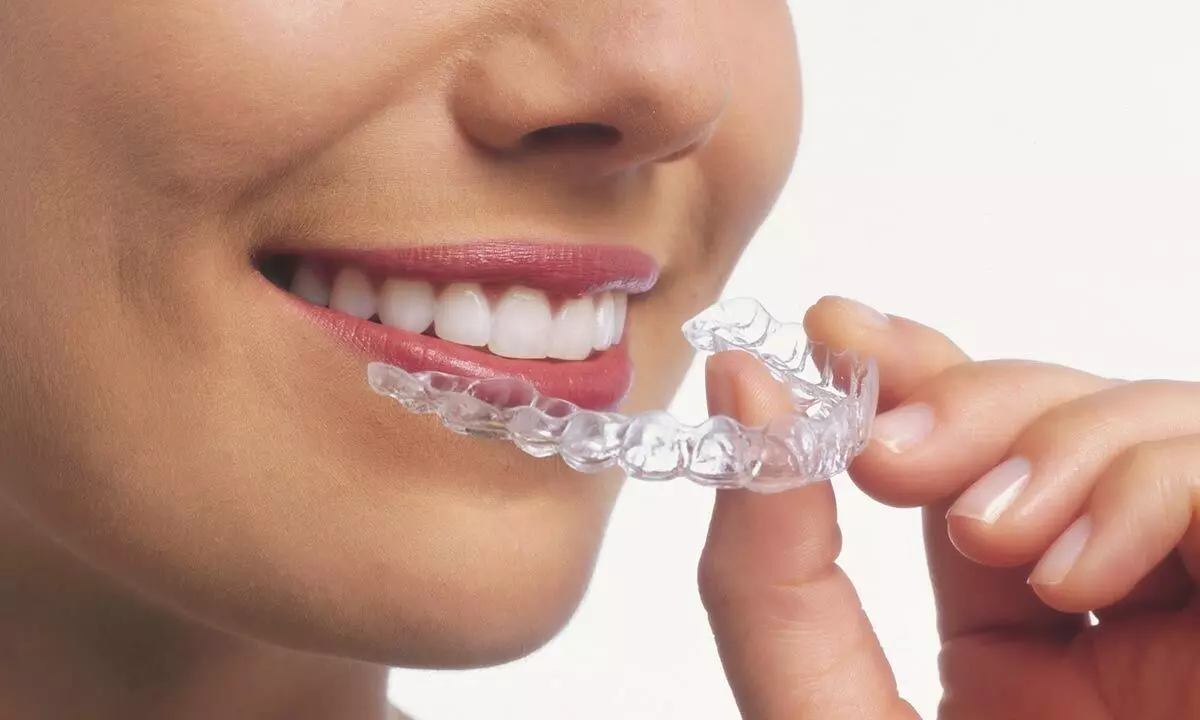Live
- Tirupati: SP seeks public cooperation to check crimes
- State govt committed to protect Wakf lands: Shariff
- Tirupati: 8 held; 69 red sanders logs seized
- Govt Schemes: Take steps to achieve loan targets says Collector to pvt banks
- Consumer rights protection is a shared social responsibility
- High Court relief for KCR, Harish Rao
- Visakhapatnam: Class VIII boy allegedly commits suicide
- Ram Mohan calls for collective efforts to develop dist
- Convocation ceremony held at ICBM-SBE
- Visakhapatnam: Webinar on web services skills on Dec 28
Just In
Dental implants and aligners


Dental implants and aligners
Dr Vijay Kumar Yennavaram, M.D.S, Dr Arpitha Yennavaram, M.D.S., FMC of Smile Signature Dental Hospital, Hyderabad talks about the dental implant and more
Implants
Dental implants are artificial tooth roots that are used to replace missing teeth. They provide a strong foundation for fixed or removable replacement teeth, mimicking the natural structure and function of the teeth. Implants are typically made of titanium, a biocompatible material that fuses with the jawbone through osseointegration.
There are generally two main types of dental implants: endosteal implants and subperiosteal implants. Endosteal implants are the most common type and involve placing the implants directly into the jawbone. Subperiosteal implants are placed on or above the jawbone, underneath the gum tissue. This type is used when there is insufficient bone height or volume for endosteal implants.
The procedure for dental implant placement typically involves multiple steps. First, a comprehensive examination and planning are done, including X-rays and 3D imaging, to assess the jawbone and surrounding structures. If necessary, bone grafting may be performed to enhance the bone density. The implant is then surgically placed into the jawbone, and a healing period of a few months is allowed for osseointegration to occur. Finally, a dental crown or prosthetic tooth is attached to the implant, providing a natural-looking and functional tooth replacement. Overall, dental implants offer a long-lasting solution for individuals with missing teeth, improving their oral health, aesthetics, and ability to chew and speak properly. However, consulting with a qualified dentist or oral surgeon is essential to determine the best approach and suitability for each case.
Aligners
Dental or clear aligners are transparent orthodontic devices used to straighten teeth and correct bite issues. They offer an alternative to traditional braces, utilising custom-made plastic aligners. These aligners gradually move teeth into their desired positions, addressing problems like overcrowding, gaps, and malocclusions.
The primary purpose of dental aligners is to achieve a straighter, aesthetically pleasing smile while improving oral health. Aligned teeth are easier to clean, reducing the risk of gum disease and decay. Additionally, bite issues such as overbite or underbite can be corrected, alleviating associated discomfort.
Treatment involves a personalised plan created by the orthodontist or dentist. The patient receives a series of aligners, worn for about one to two weeks each, applying gentle pressure to shift the teeth. Regular check-ups and compliance are crucial for progress monitoring and adjustments. Overall, dental aligners provide a discreet, convenient solution for teeth straightening, offering improved oral health and a confident smile.
Smile Design
Smile design, in dental terminology, refers to a comprehensive approach that focuses on enhancing the aesthetic appearance of a person’s smile. It involves various cosmetic dental procedures, such as teeth whitening, dental veneers, dental bonding, orthodontics, and gum reshaping, among others. The primary purpose of smile design is to create a harmonious, balanced, and attractive smile that complements a person’s facial features and boosts their self-confidence.
Dentists use smile design to analyse factors like tooth colour, shape, size, alignment, and gum tissue to develop a customised treatment plan. They aim to address dental imperfections, such as stained or discoloured teeth, chipped or misshapen teeth, gaps, overcrowding, or excessive gum display. By combining artistry and dental expertise, smile design helps individuals achieve a natural-looking, beautiful smile that can positively impact their overall appearance and self-esteem.
([email protected],9885128980, [email protected] 9966333113, Reimbursement facility is available for Telangana government employees, OPG X-Ray available)

© 2024 Hyderabad Media House Limited/The Hans India. All rights reserved. Powered by hocalwire.com






